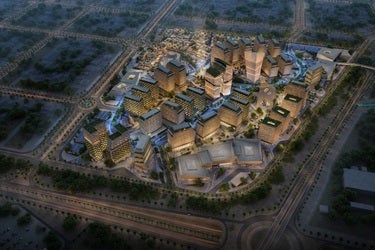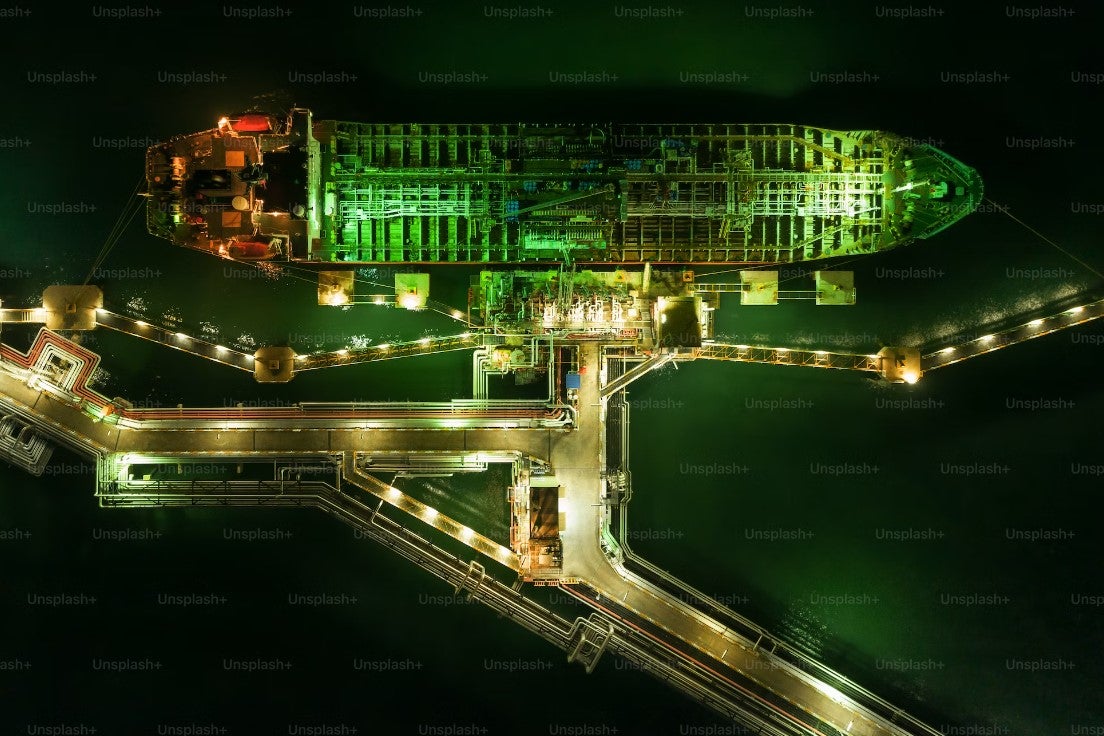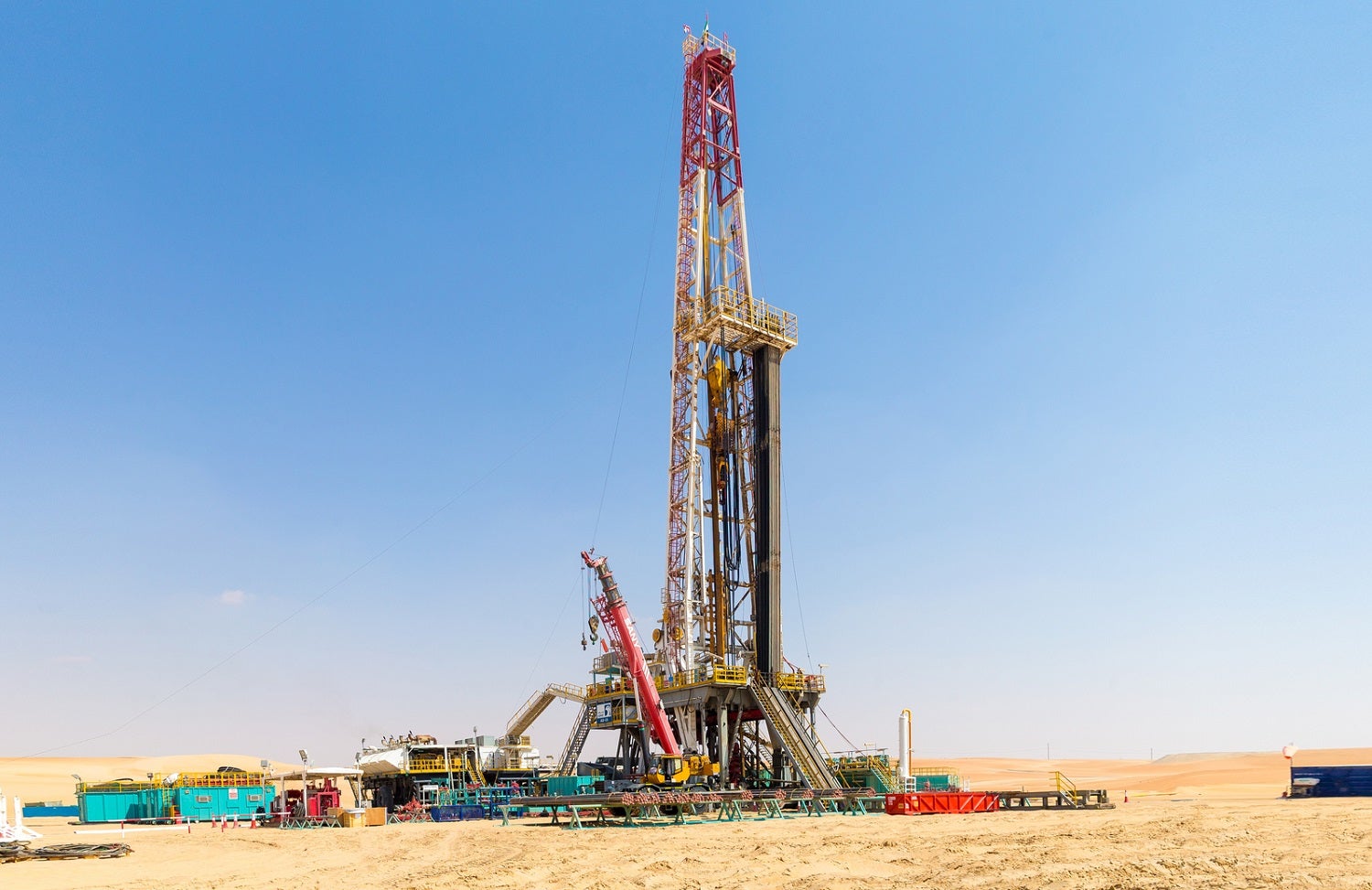Ambitious projects rebrand engineering
20 May 2024

Over the past two decades, the Middle East has undergone a significant transformation driven by rapid urbanisation, economic diversification and geopolitical dynamics. The region has emerged as a global hub for trade, investment and innovation, with infrastructure playing a central role in facilitating this growth.
According to Pierre Santoni, president of Europe, Middle East and Africa for Parsons Corporation, ongoing infrastructure investment has created a market that continues to offer strong growth opportunities for the construction industry.
“Parsons is one of the oldest firms operating in the Middle East, which is a growing and well-funded market, with a team that is executing at a high level and our company has continued to make investments to drive growth in the business,” he says.
“We had an outstanding fourth quarter and full year in 2023 with record results for total revenue, organic revenue growth, adjusted Ebitda and operating cash flow, as well as major contract awards in countries such as Saudi Arabia, the UAE and Qatar.”
Changing focus
The region’s transformation has led to an adjustment in priorities as pressure on existing infrastructure mounts, he notes.
In the UAE, the focus in the early 2000s was primarily on developing landmarks and megaprojects that showcased the region’s ambition and prosperity. This era saw the construction of iconic structures such as the Palm Jumeirah, Burj Khalifa and, more recently, Etihad Rail, symbolising the country’s aggressive development plans.
Over recent years, there has been a shift towards more sustainable and resilient infrastructure development, with the UAE government prioritising investments in transportation, utilities and smart city initiatives to enhance residents' quality of life and improve mobility and infrastructure.
“The demographic trends, including rapid population growth and urbanisation, are placing strain on existing infrastructure networks, necessitating investments in expansion and modernisation,” says Santoni.
Robust infrastructure is required to support the regional government’s economic diversification efforts, which are driving investment and growth in sectors such as tourism, technology and renewable energy. This includes the development of new highways, ports and transportation systems to facilitate trade and tourism.
“The UAE has outlined a stable investment programme that includes the development of large transportation and construction schemes,” says Santoni. “We are working with the Abu Dhabi government on Plan Capital 2040 and it promises tremendous growth opportunities for Parsons.”
Dubai also offers opportunities for growth due to the property market boom and the government’s plans for new infrastructure projects.
“Government spending in Dubai has accelerated post-Covid. There is a renewed optimism in the market through large-scale infrastructure projects and major real estate schemes,” Santoni adds.
“Parsons is working closely with some of the major real estate developers in Dubai, such as Emaar and Dubai Properties.”
Santoni says that although the market has a strong pipeline of upcoming projects, there will also be a focus on improving the infrastructure that already exists.
“There is a lot of focus on improving the existing infrastructure; hence, we have added operations and maintenance services into our portfolio.”
Beyond the UAE
The UAE is just part of Parsons’ work in the GCC. It also has a significant presence elsewhere in the GCC, including Saudi Arabia and Qatar. The company has been operating in Saudi Arabia for over 65 years and is working on a wide range of major programmes in the country, including The Line at Neom, Riyadh Sports Boulevard, King Salman International Park and Diriyah Gate, among others.
Santoni says, “Saudi Arabia is the fastest growing market globally and is a key market for us. The Vision 2030 projects are a driving force for much of our business in the kingdom and we expect robust growth in coming years.”
“We are investing significantly in enhancing our engineering capabilities catering to the Saudi market,” he adds.
The firm has also played a key role in delivering major infrastructure development schemes in Qatar, including for the 2022 World Cup. After a strong decade during the build-up to the event, Parsons worked on several other major schemes in the country, such as the Doha Metro, Qatar Rail, Seef Lusail, Hamad International airport expansion and Pearl Qatar.
Santoni expects Qatar’s growth to be more reserved over the next few years as the country develops a new long-term strategic development plan.
Attracting talent
With so many projects proceeding, the challenge for engineering companies such as Parsons is attracting talent.
“We have done a lot over the years to make Parsons an employer of choice for Saudi and UAE nationals, and we’re making significant investments in training and retention programmes to continue offering outstanding career opportunities,” says Santoni.
Construction now has to compete with other industries such as technology and IT, which are often considered more exciting places to work.
Santoni says that this may change in the future as the world realises that there is an infrastructure gap that needs bridging with new and exciting projects, especially in the Middle East region.
“Many people have left the industry over the past few decades, but with the planned infrastructure projects, engineering is starting to look cool again.”
Exclusive from Meed
-

-

-

-

-
 Kuwait extends deadline for Jurassic oil project
Kuwait extends deadline for Jurassic oil project2 July 2025
All of this is only 1% of what MEED.com has to offer
Subscribe now and unlock all the 153,671 articles on MEED.com
- All the latest news, data, and market intelligence across MENA at your fingerprints
- First-hand updates and inside information on projects, clients and competitors that matter to you
- 20 years' archive of information, data, and news for you to access at your convenience
- Strategize to succeed and minimise risks with timely analysis of current and future market trends

Related Articles
-
 Iraq to start procurement for $1bn rail modernisation
Iraq to start procurement for $1bn rail modernisation2 July 2025

Iraq’s Ministry of Transport and its General Company for Railways division will soon start procurement for a $1bn-plus modernisation programme of its north-south main rail line.
Known as the Iraq Railways Extension & Modernisation (IREM) project, the scheme comprises the rehabilitation, upgrade and modernisation of 1,047 kilometres (km) of existing single-line track linking Umm Qasr Port in the south with Mosul in the north, running through Basra and Baghdad.
There will be two main construction packages. The first contract, expected to be tendered in October, covers:
- Renewal of 32km of track between Al-Yussifia and Baghdad, totalling 32km, with an estimated cost of $33m
- Renewal of 20km of track between Baghdad and Taji, totalling 20km, with an estimated cost of $21m
- Renewal of the line between Baiji and Mosul, totalling 189km, with an estimated cost of $197m
The second deal involves the largest element of the programme: an estimated $570m deal to install European Train Control System (ETCS) signalling and ducts for optical fibre along the entirety of the line, including a safety level-crossing protection system for all official crossings along the alignment, and the modernisation of selected train stations.
The package will also include the:
- Spot rehabilitation of the 72km-long Umm Qasr-Basr line, with an estimated cost of $4m
- Spot rehabilitation of the 520km-long section between Basra and Baghdad, with an estimated cost of $32m
Requests for proposals for this second deal are due to be issued in January 2026.
Before then, the client is expected to tender an estimated $15m contract for the capex management role on the scheme this month.
Iraq’s rail sector consists of a 2,272km standard gauge network with 115 stations, most of which are in poor condition and provide only limited transport options.
The system features two main routes: the north-south line and an east-west line running from Baghdad to near the Syrian border.
There are also several short branch lines. Service is limited, with a few freight trains carrying oil and grain, as well as passenger services, including an overnight Baghdad–Basra train and a weekly train to Samarra.
The southern section of the north-south line was partly restored in 2014, allowing trains to run up to 80km an hour (km/h) with a 25-tonne axle load.
The northern segment, from Baghdad to Rabiaa and linking to Syria, operates at 40-60 km/h with an axle load limit of 18-20 tonnes. This section sees limited and irregular freight movement and contains a major workshop at Baiji that will be refurbished under the programme at an estimated cost of $10m.
The modernised railway line is expected to carry 6.3 million tonnes of domestic freight, 1.1 million tonnes of exports and imports, and 2.85 million passengers by 2037.
The IREM project is a central component of Iraq’s Development Road (IDR) Initiative, which aims to position Iraq as a regional transportation hub linking the GCC states with Turkey and then Europe. In the long run, the network is hoped to connect with the planned GCC railway in Kuwait.
The launch of the project follows confirmation from the World Bank of a loan agreement worth $930m to fund almost all of the project.
Prior to the extension of the loan, Italy’s BTP Infrastrutture carried out the initial feasibility study and preliminary design work.
The firm is also conducting a similar contract covering a new multibillion-dollar 1,700km high-speed railway between Al-Faw on the Gulf coast and Fishkabour on the Syrian border, along with a major highway along the same alignment.
It has also been engaged on the design of the Al-Faw Grand Port project.
https://image.digitalinsightresearch.in/uploads/NewsArticle/14187478/main.gif -
 Hong Kong firm reveals $3bn Riyadh tech district design
Hong Kong firm reveals $3bn Riyadh tech district design2 July 2025
Register for MEED’s 14-day trial access
Hong Kong-headquartered architectural firm LWK & Partners has released details about the estimated SR12bn ($3.2bn) Pulse Wadi project, an upcoming technology and cybersecurity district located on the outskirts of Riyadh.
The project will span an area of over 600,000 square metres (sq m) with a gross floor area of about 1.14 million sq m.
In an official statement, the firm said that the project will be anchored by a government complex, two iconic headquarters, several cultural institutions and a dynamic cyber-research district.
At the centre of the district lies the central wadi plaza, which will be an events space.
LWK & Partners is the project’s lead design consultant, master planner, urban designer, design architect and landscape architect.
According to UK data analytics firm GlobalData, the construction industry in Saudi Arabia is expected to grow by 4.4% in real terms in 2025, supported by investments in the housing, energy, industrial and transport infrastructure sectors, coupled with investments in preparation for football’s Fifa World Cup 2034.
In November last year, the government approved the kingdom’s 2025 budget, which includes a total expenditure of SR1.3tn ($342.7bn) for this year.
The commercial construction sector is expected to grow by 3.7% in real terms in 2025, before registering an annual average growth rate of 3.7% in 2026-29, supported by investments in leisure and hospitality, retail, data centres and sports infrastructure projects.
https://image.digitalinsightresearch.in/uploads/NewsArticle/14187435/main.jpg -
 Indian contractor wins Ruwais LNG jetty construction
Indian contractor wins Ruwais LNG jetty construction2 July 2025
Register for MEED’s 14-day trial access
India-based ITD Cementation India has announced winning a contract worth $67.7m for jetty construction work on Abu Dhabi National Oil Company’s (Adnoc) upcoming liquefied natural gas (LNG) processing terminal at Ruwais in Abu Dhabi.
The job is understood to have been awarded by a consortium of France’s Technip Energies, Japan-based JGC Corporation and Abu Dhabi-owned NMDC Energy, the main contractors performing engineering, procurement and construction (EPC) works on the $5.5bn project.
Prior to awarding this sub-contract to ITD Cementation India, the consortium of Technip Energies, JGC Corporation and NMDC Energy awarded Abu Dhabi-based Dutch Foundations a contract to perform piling works on the Ruwais LNG project.
Also, in January, US-based midstream energy and storage services provider Chicago Bridge & Iron (CB&I) won an order from the main EPC consortium to supply two cryogenic tanks for the Ruwais LNG project. CB&I described the contract as “substantial”, a term it uses to denote values between $250m and $500m.
Ruwais LNG terminal project
The upcoming LNG export terminal in Ruwais will have the capacity to produce about 9.6 million tonnes a year (t/y) of LNG from two processing trains, each with a capacity of 4.8 million t/y. When the project is commissioned, Adnoc’s LNG production capacity will more than double to about 15 million t/y.
Adnoc awarded the full EPC contract to the consortium of Technip Energies, JGC Corporation and NMDC Energy, and achieved the final investment decision for the Ruwais LNG terminal complex in June last year.
The complex will also feature process units, storage tanks and an export jetty for loading cargoes and LNG bunkering, as well as utilities, flare handling systems and associated buildings.
The planned LNG facility will run on electric-powered rotary equipment and compressors instead of gas-fired units. Adnoc awarded a $400m contract in October 2023 to US-based Baker Hughes for the supply of all-electric compression systems for the project. The LNG trains will run on energy-efficient Baker Hughes technology, including compressors driven by 75MW electric motors.
Separately, Adnoc has also signed agreements with international energy companies to divest a total stake of 40% in the Ruwais LNG project.
UK energy producer BP, Japan's Mitsui & Co, London-headquartered Shell and French energy producer TotalEnergies will each hold 10% stakes in the Ruwais LNG terminal project, with Adnoc retaining the majority 60% stake in the facility.
Adnoc Group subsidiary Adnoc Gas will acquire its parent company’s 60% stake in the Ruwais LNG facility at cost in the second half of 2028, when first production from the complex is due.
ALSO READ: Adnoc to supply LNG to Mitsui from Ruwais project
https://image.digitalinsightresearch.in/uploads/NewsArticle/14186135/main.jpg -
 Firm wins $27m Dubai Ras Al-Khor wildlife sanctuary work
Firm wins $27m Dubai Ras Al-Khor wildlife sanctuary work2 July 2025

Austrian firm Waagner Biro, part of French engineering group Egis, has won a AED100m ($27m) contract for the first phase of the Ras Al-Khor wildlife sanctuary development project in Dubai.
Dubai Municipality awarded the contract.
The project’s first phase covers an area of over 6.4 square kilometres (sq km) and is expected to be completed by 2026.
The scope involves rehabilitating mangrove habitats and increasing mangrove coverage from 40 hectares to 65 hectares. This includes adding new irrigation channels, rehabilitating mangrove forests, creating new habitats such as the mangrove lake, north edge lake and reed ponds, and adding a green spine.
According to an official statement, the first phase also involves increasing the water bodies by 144%, expanding their total area to 74 hectares. Additionally, 10 hectares of mudflats will be added.
Dubai Municipality awards contract for first phase of AED650 million Ras Al Khor Wildlife Sanctuary Development Project. The initial phase of the project is expected to be completed by the end of 2026. The project is expected to multiply the number of visitors to the sanctuary… pic.twitter.com/iVsg5Qqq0p
— Dubai Media Office (@DXBMediaOffice) June 30, 2025
Ras Al-Khor Wildlife Sanctuary was established in 1985 and is on the list of wetlands of international importance under the Ramsar Convention 2007, making it the first Ramsar site in the UAE. Birdlife International has also declared it an important bird area.
https://image.digitalinsightresearch.in/uploads/NewsArticle/14185288/main.jpeg -
 Kuwait extends deadline for Jurassic oil project
Kuwait extends deadline for Jurassic oil project2 July 2025
State-owned upstream operator Kuwait Oil Company (KOC) has extended the bid deadline for its planned project to develop Jurassic Light Oil (JLO) export facilities and upgrade the existing export network.
The main contract bid submission date for the project, which is understood to have a budget of KD175m ($569m), has been changed to 15 July 2025.
The previous bid deadline was 24 June 2025.
The project was originally tendered in November last year with a bid deadline of 1 December 2024.
Other recent deadlines have included 27 May, 27 April and 6 April.
In an announcement in April this year, the list of prequalified bidders was made up of 15 companies:
- CTCI (Taiwan)
- Daewoo (South Korea)
- Fluor (US)
- Hyundai Engineering & Construction (South Korea)
- Hyundai Engineering Company (South Korea)
- Hyundai Heavy Industries (South Korea)
- JGC Corporation (Japan)
- Larsen & Toubro (India)
- NMDC Energy (UAE)
- Petrofac (UK)
- Saipem (Italy)
- Samsung Engineering Company (South Korea)
- Sinopec Engineering Corporation (China)
- Sinopec Luoyang Engineering Company (China)
- Tecnicas Reunidas (Spain)
In September 2024, KOC made a second announcement about the project, stating that just 13 companies were prequalified.
Both Hyundai Heavy Industries and NMDC Energy had been removed from the list.
At the time, KOC said that companies not included on the list could file a complaint against their non-inclusion before the official invitation to bid on the project.
It is unclear whether more prequalified companies have been added or removed from the list since September.
https://image.digitalinsightresearch.in/uploads/NewsArticle/14179469/main1321.jpg

